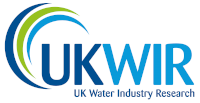Transferring minimal excavation technology to the water industry - 22/WM/12/1
07/12/2022
What we did
This project sought to identify potential technologies and processes which can help solve this problem, taking into consideration all aspects from pre-excavation asset location
through to reinstatement.
The project steering group, led by Jeremy Heath, Innovation Manager at SES Water and lead for the UKWIR national zero leakage project, identified current and developing technologies for minimal excavation through a programme of global literature reviews and interviews with subject matter experts and relevant companies. A workshop attended by practitioners, technology providers and water companies highlighted the critical issues that
needed to be overcome in order to ensure these technologies can be widely adopted in the water industry.
What we found
Outcomes from these activities, along with the expertise of the WRc team and project steering group were used to develop:
- A functional specification, defining requirements for the applications of this technology
- An analysis of the current gaps between this specification and existing technologies
- A route map to enable implementation by the water industry.
There are challenges associated with transfer and widespread use of minimal excavation technology – ranging from direct technical issues to broader challenges including skills shortages and regulatory barriers.
What this means
Through this project, the water industry has set out a clear route to overcome these issues, adopt new processes and meet challenging leakage targets – while also minimising disruption to customers.
